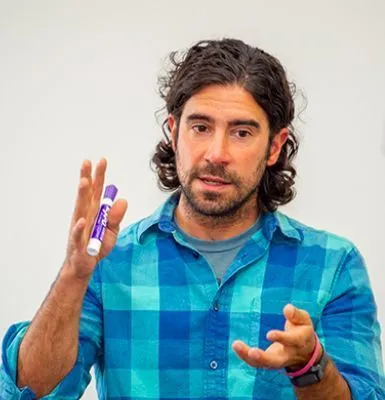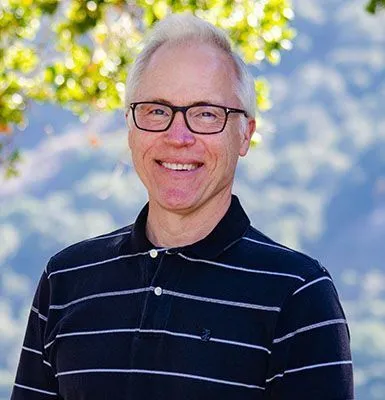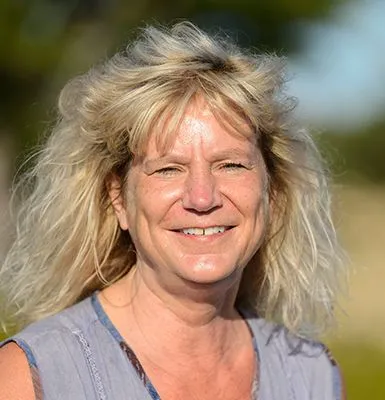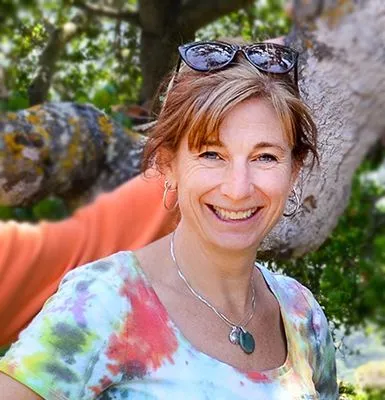Science at York
The York science curriculum helps students develop critical thinking skills grounded in a broad knowledge of the major concepts of science and the scientific method. Students learn to understand and interpret natural phenomena through extensive laboratory work, class discussions, field trips, guest lectures, and experimental research projects.
All students are required to take Biology, Chemistry or Physics, and one other science course, so that a basic competence is developed across the range of natural phenomena. Secondary elective courses, some at the AP level, are offered in all three areas. Students with special interests in science have many opportunities to further develop their general knowledge and their research skills in preparation for college majors in science. Other significant features of the science curriculum include the following:
- York’s own Science Fair, judged by over 40 local scientists, which allows students to develop independence and furthers understanding of the scientific method;
- Our “green” science building, which helps students to achieve a sense of global awareness and responsibility;
- The Outdoor Lab and Design Shop, where students can easily conduct field work to advance their understanding of science.
Requirements. In Grade 8, students enroll in Science 8 for the full year. In Grades 9-12, three years of science are required for graduation: Biology (usually taken in 9th grade), Chemistry or Physics, and one other science course.
Courses Available
Offered in alternating years
Students are introduced to the basic concepts of anatomy and physiology, with an emphasis on humans, while using the comparative anatomy approach to show relationships between all vertebrates. Approximately 40% of class time is devoted to laboratory activities which include dissection, monitoring various physiological parameters and hands-on study of 3-D models. Through lectures, discussions, and labs, students develop a strong sense of how structure and function are related.
This course is designed to be the equivalent of a college introductory biology course taken by biology majors during their first year. The textbook, reading assignments, writing assignments, and written examinations are equivalent to those found in major college biology programs. Lectures, discussions, chapter study questions, laboratory investigations, and written examinations are used for instruction and student evaluation. Students become extraordinarily adept at tying various concepts together, and in the world of modern biology, this is definitely a skill necessary for success. The course will include the material that will appear on the AP Biology exam, and all students enrolled in the course will be expected to take this exam in May.
This course is designed to build on the body of knowledge gained in the first year Chemistry course. Content will be equivalent to an introductory college level course and so the lectures, problem sets and lab activities are designed to replicate this. Topics covered include stoichiometry, aqueous reactions, electronic structure, phases of matter, chemical bonding, thermodynamics, kinetics, electrochemistry, equilibrium and acids and bases. These are the concepts that will appear on the AP Chemistry exam which students will be expected to take at the end of the course. In addition students will be introduced to a variety of essential lab techniques including titration analysis and spectrophotometry. All assignments and hands-on activities are designed to develop strong data analysis, critical thinking and creative problem solving skills.
This calculus-based course is designed to build on the foundation of the first-year Physics course. Both the lecture and laboratory work go significantly beyond first-year physics in the depth and detail with which topics are covered. Hands-on lab work is an essential component of the course, providing a platform for inquiry-driven experiential learning. This class also emphasizes the art of problem solving. To support this objective, the bulk of assigned homework emphasizes reasoning rather than rote memorization and single-step plug-and-chug problems. Students are encouraged to work collaboratively. The course will include the material that appears on the AP Physics C: Mechanics exam, and all students enrolled in the course will be expected to take this exam in May.
With scientists unraveling the mysteries of life faster than ever before, this introductory survey course provides a foundation for students to understand the living world around them. It covers introductory biological principles, including chemistry of life, cellular structure and function, heredity and molecular genetics, evolution, ecology, and classification. Students are encouraged to approach science both critically and with curiosity, utilizing lectures, discussion, readings, and a significant laboratory component. In addition, all students complete an individual research project based on the scientific method, enabling them to make their own science connections to the real world. Also, field work and environmental studies can be conducted easily in the 100-acre York Outdoor Laboratory.
This course takes a look at the world on the atomic level. Students will gain an appreciation for the diversity and complexity of everyday chemical substances. They will be able to apply atomic theory to explain why certain elements or compounds react under certain conditions. They will be able to describe these reactions using appropriate nomenclature, symbols and chemical quantities. The understanding of theoretical concepts is reinforced during lab activities. Students will use a variety of laboratory techniques to collect data and apply critical thinking skills to analyze the results.
This course introduces students to a variety of environmental issues both locally and globally. The emphasis is on solutions for living sustainably. Issues are considered from many perspectives to help students realize it takes compromise and understanding from many groups to solve today’s environmental problems. The students use critical thinking skills and examine the “big picture.” Field trips to local areas of interest, work in the field, and laboratory exercises help to reinforce ideas discussed in class. Field research and environmental studies can be conducted easily in the 100-acre York Outdoor Lab.
Offered in alternating years
This course introduces students to the basic concepts of oceanography, marine ecology, marine zoology, and marine botany. Field trips to local areas of interest and laboratory exercises give students an appreciation for and knowledge of the dynamics of the marine ecosystem both locally and globally. Laboratory investigations include hands-on dissections, scientific illustration and work with live specimens.
This is a foundational course for science and engineering with an evolving emphasis on project-based learning of introductory applied physics. Applied physics is at the intersection of physics and engineering. Physicists build to understand; engineers understand to build. In this course students are doing both. Through the curation of various experiences, the goal is to help students gain a better understanding of how science applies to the real world and develop skills that will be useful in their future career. The course is designed to encourage and promote self-directed study, exploration of physics in the context of real-world applications, improved collaborative and communication skills in team-driven activities, and the development of research skills by working on projects. The subject areas covered by this course include kinematics, momentum, force, work and energy, with extensions into rotational kinematics, angular momentum, gravitation, and oscillation and waves. It is equivalent to a standard introductory algebra-based physics course.
The goal of this course is twofold. First is to give the students a conceptual (non-mathematical) overview of the major topics in physical science. Second is to teach the scientific method and help students develop the ability to use this tool as a logical approach to problem solving. Labs, activities, and projects are used to help students become scientists-in-training, simultaneously helping to develop proficiency with making measurements and fostering critical thinking in the analysis of data. Students learn the principles and connections between physics, chemistry, and earth science, while taking a journey from the outer reaches of space to the inner workings of atoms and molecules.






